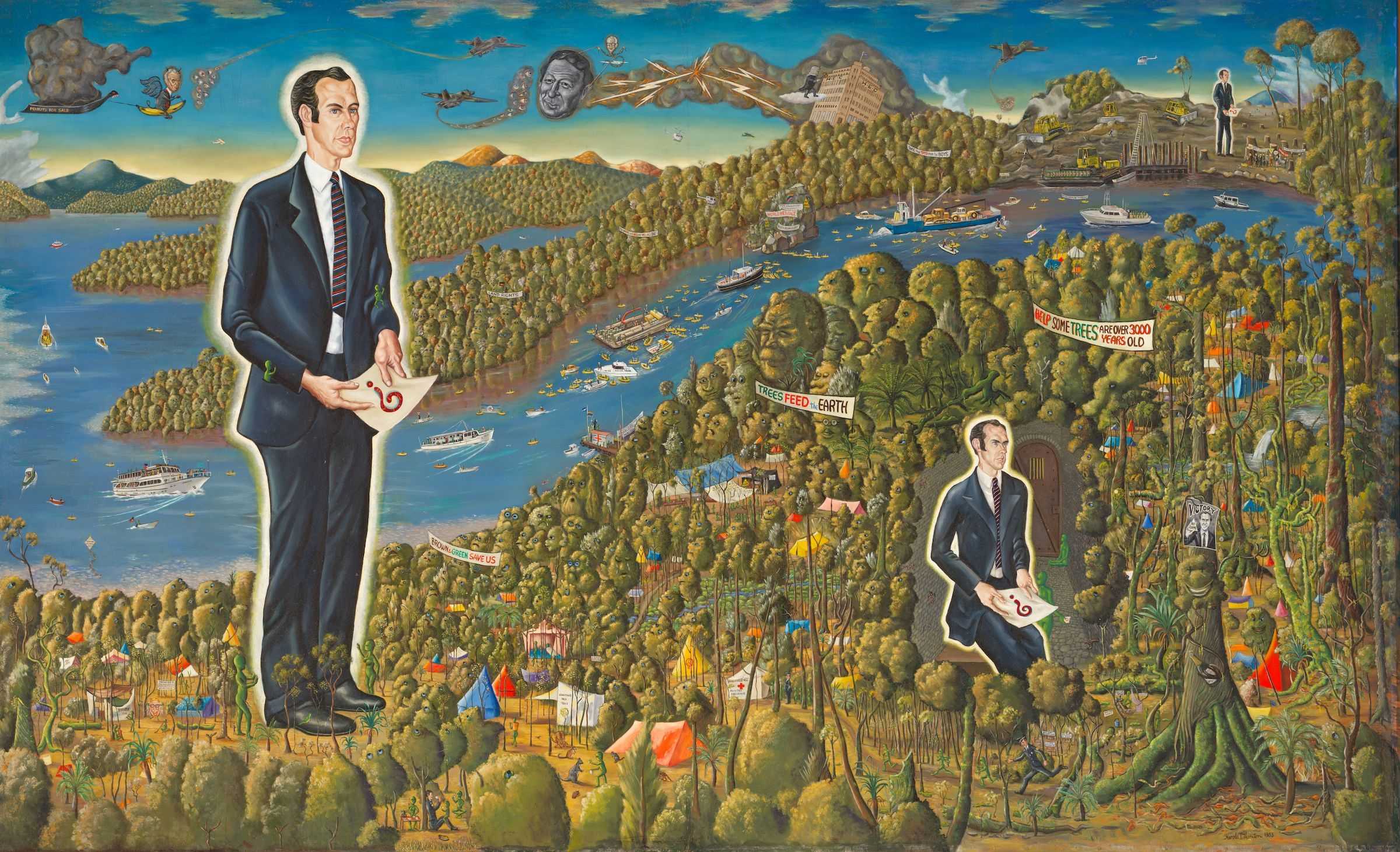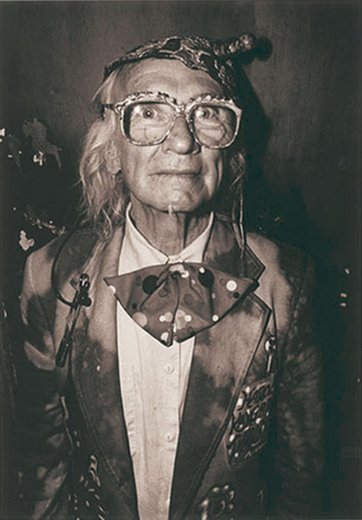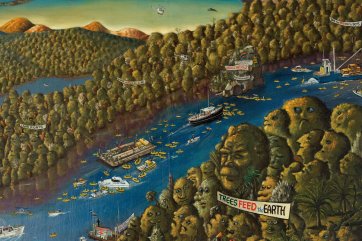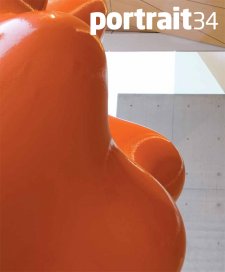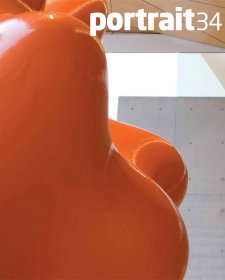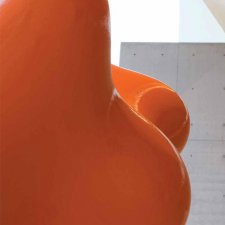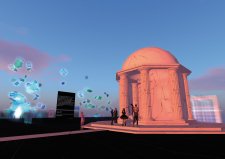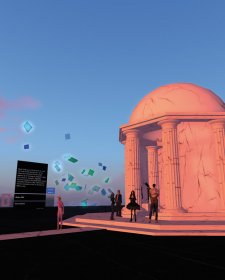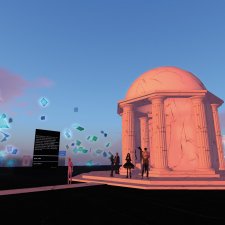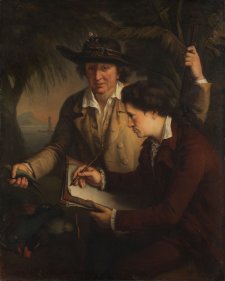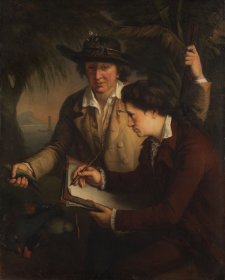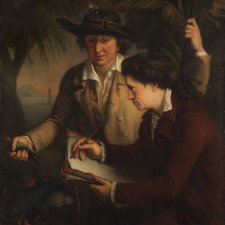On first inspection, the wild rumpus of smiling trees, cavorting green gnomes, ships, planes and tractors bestrode by a benign and colossal Dr Bob Brown appears comedic and not at all a serious attempt to record Australian history. This is, nonetheless, an important history painting, one of a handful of Australian paintings that could be so described.
Until the twentieth century, history painting was considered the ‘grand genre’, the most important form of painting, outranking portraits, genre painting, landscape, animal painting and still life. Renaissance polymath Leon Battista Alberti had argued in his Della Pictura of 1436 that complex history painting was the highest form of art because it required mastery of all the others and because it had the greatest potential to move the viewer by conveying a moral or intellectual message.
History painting is rare in Australian art. Our preference for landscape painting is well known, perhaps because we prefer informality over moral lessons and, Gallipoli not withstanding, we are cynical, even ashamed, about the events in our short history. A list of Australian history painting would include The Conciliation 1840 by Benjamin Duterrau; Black Thursday, February 6th 1851 1864 by William Strutt; “The Opening of the First Parliament of the Commonwealth of Australia by H.R.H. The Duke of Cornwall and York (later H.M. King George V), May 9, 1901” 1903 by Tom Roberts and The Australian Republic 2000 by Juan Davila. Harold Thornton’s Doctor Brown and green old time waltz 1983, which documents the most controversial environmental issue of the 1980s – the damming of the Franklin River in Tasmania, can be added to this list.
Harold Leslie Thornton (1915–2004), aka Harold the Kangaroo, self styled ‘Greatest Genius that Ever Lived’, was born in Enfield, nsw. He began his association with art when he was apprenticed to learn the craft of sign writing at the age of fourteen. While it wasn’t an enduring vocation – ‘I was a signwriter who couldn’t spell’ – it led Thornton into painting.
He sold few works during his life but with his long grey hair, hippy clothing and slogan painted van, he attracted attention as one of Sydney’s colourful characters, becoming the subject of several documentary films. Thornton had attended art classes but his eclectic mix of abstractions and psychedelic canvases owed little to any school. Eccentric, irreverent and mischievous, Thornton lived on the fringes of the Sydney art world, working in his small Burton Street apartment in Darlinghurst. Like many others, he answered the call to action when Dr Bob Brown, founding Director of the Tasmanian Wilderness Society toured nationally to stop the damming of the Gordon River and threatened inundation of South West wilderness above the Franklin River. Thornton travelled to Tasmania and joined the 800 or so protestors blocking the construction of the dam in December 1982. Thornton painted this portrait of Dr Brown while he was in the wilderness campsite and in his Hobart studio, putting the final touches to the work when he eventually returned to Sydney.
Robert James Brown (born 27 December 1944), the subject of Doctor Brown and green old time waltz 1983, was embarrassed by the painting. He had posed for Thornton, not knowing what the final picture would look like and never suspecting that it would be displayed in the Archibald. Brown’s embarrassment stemmed from the way that he had been depicted: Thornton painted the 38 year old medical practitioner quite realistically but each of the trinity of Browns is surrounded by an aureola of light, effectively presenting him a secular saint. Thornton’s cosmic and jokey approach typifies the ‘mind-altering’, drugflavoured art of the hippy fringe favoured by much of the back-to-the-land youth, not yet environmentalists, who were settling country towns like Nimbin.
Looking at the painting in the National Portrait Gallery twenty five years later, Brown confided that he was now able to accept the painting and the inherent adulation in it as something now tempered by history. While Thornton’s imagination generated the frolicking greenies in the painting, Brown was delighted to recall the many details of the whole Gordon-on-Franklin campaign that had been faithfully recorded by the artist. ‘The blockade began’, said Brown, ‘on the very day that World Heritage nomination went through in Paris and we were extremely nervous and we flew over the dam site and ... down there it was like a cross between a naval blockade – or a naval battle – and a regatta.’ By March 1983, 1400 protestors had been arrested, including Brown himself. At the bottom centre of the painting a policeman sits sipping a cuppa with a ‘greenie’. Brown recalled that many of the police were sympathetic to the protest. ‘They would show us the inside of their hats and there would be the “No Dams” sticker’. With the support of the No Dams campaigners, the Labour Party won the 1983 Federal election, The newly elected Hawke Government promptly introduced legislation to protect the World Heritage site.
Despite the Labour Party’s decision to stop the dam with new legislation, Tasmanian Premier Robin Gray was quick to mount a challenge in the High Court. His action was endorsed by Queensland Premier Joh Bjelke-Petersen. On 1 July the High Court announced that the Federal Government did indeed have the power to intervene and the Franklin was saved. A fourth portrait of Brown appears, this time as a smiling image in a poster celebrating victory – No Dams! Thornton was proud of the painting which he exhibited in the 1983 Archibald Prize, and issued a poster of the painting in 1985 to publicise his work but he sold few paintings. He had lived in Amsterdam during the 1970s and had been commissioned to paint psychedelic images on the façade of the Bulldog, a bar in the famous redlight district. Feeling unappreciated in Australia Thornton returned to Amsterdam for his last years, taking this painting with him.
Brown went from environmental activist to politician. The party that he formed and now leads, the Greens, are an independent and potent force in Australian politics.
